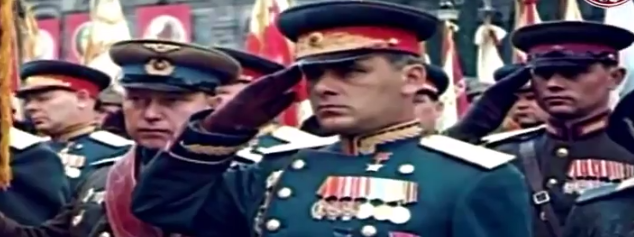Russians Rocking & Rolling
Soviet Rock & Roll music began to emerge in the mid to late 50’s during the cultural thaw. For a
Read moreSoviet Rock & Roll music began to emerge in the mid to late 50’s during the cultural thaw. For a
Read more1956 International Youth Festival The International Youth Festival was a week long event held in Moscow in 1957. The
Read more
Art in the post war period embodied the optimistic attitudes of the Soviet Union and highlighted the new positive changes in daily life. One of the most successful artists of this time was Aleksandr Laktionov. He studied at the Soviet Academy of the arts and received the Stalin Award for his famous piece “Letter from the Front” in […]
Read more
The second world war was one of the most defining if not the single most defining event for the Russian people perhaps of all time. The Soviet Union was brutally attacked after the formation of a non-aggression pact with their invaders, the Germans. Hitler’s campaign was one aimed at annihilation and extermination rather than at […]
Read more“The physical education of the rising generation is one of the necessary elements of the system of communist education of youth” – Vladimir Lenin The incorporation of regular exercise into the lives of the soviet people was seen as necessary because there was this association between physical well being and social well being. The success of socialism and the health of the revolution
Read more
The first five year plan (1928-32) was a period of fundamental economic transformation. Stalin and the communist party called for the rapid industrialization of Russia and the collectivization of her agriculture. Enormous, unrealistic quotas were set to inspire a complete transformation of Russia’s economy. The collectivization of agricultural production was thought to be a more efficient means of producing grain
Read moreMikhail Zoshchenko was an immensely popular Russian writer and satirist during the early soviet era. He used simple language to appeal to a broad base of Russian readers, who would have identified their grievances with the emerging and rapidly changing society with the humor and thematic undertones of Zoschenko’s work. In “The Lady Aristocrat”, published in a mass circulated newspaper,
Read moreRussian futurism emerged in 1912 primarily around the appreciation of modernity and human technological achievement. The futurists looked to the bustling commotion of growing cities, their rising skylines and chaotic sprawls for inspiration. Most of the work that came out of the futurist school captured in some ways both the literal movement of urban life and the movement of mankind, […]
Read moreFollowing the liberation of Russia’s serfs in 1861, a group of liberal students at the Russian Imperial Academy of the Arts began refusing to subscribe to the school’s emphasis on historical painting and replication. These students, called the “Peredvizhniki” (“wanderers”) saw the constraining teachings of the Imperial Academy as irrelevant to and disconnected from contemporary Russian life and society. Instead […]
Read more